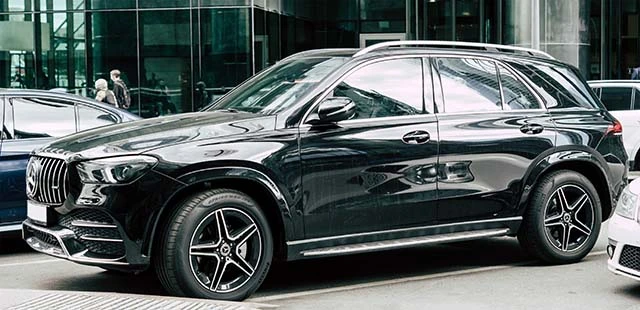If you’re not a seasoned driver who’s been through thick and thin when it comes to driving conditions, it can be hard to tell apart various types of tires. Still, the difference between winter and summer tires is extremely important – if you drive with tires that are wrong for the weather conditions you’re in, this can have a huge impact on your safety. Stay with me to find out the basics of summer and winter tires – you’ll learn what you need in no time.
Winter and summer tires are different in the ways they are designed and the materials they are made of. Winter tires work best in cold, snowy, icy conditions, while summer ones are suitable for warm and dry, but also warm and wet weather. Winter tires have deeper treads, with more grooves and sipes than summer tires. On the other hand, summer tires have shallow but wide treads with fewer grooves. Their profile is lower than the one on winter tires. The type of rubber that’s used for manufacturing summer and winter tires isn’t the same – winter tires have a higher content of natural rubber.
Why Is It Important to Know the Difference Between Winter and Summer Tires?
If you find yourself in a situation where you need to change a flat tire, it’s essential to know what kind of tire you should replace the old one with. Now, someone might say that it isn’t important to distinguish between winter and summer tires – why do you need to be picky? Trust me when I tell you that this difference can mean life or death on the road – the primary reason for choosing the right tire is your safety. All rookie drivers need to know which tire to use in certain weather conditions.
Apart from your safety while driving, the kind of tires you have on the car can have an impact on the comfort of the ride. Also, vehicle performance – such as cornering or breaking – is affected by tires, and the wrong ones for the conditions of the road you’re on can make it difficult to maneuver a car. If you stay until the end of this text, you won’t have any trouble telling apart a summer and a winter tire, and you’ll be able to easily decide when to use each type.

What Tools Do You Need for Changing Tires?
Changing a tire requires a few essential tools to ensure the task is completed safely and efficiently. Here are the tools and brands I always recommend when someone needs to change a tire.
| Products | Price | Ratings |
| Excited Work Impact Wrench | $69.99 | 4.2 |
| CARTMAN Universal Heavy-Duty Lug Wrench | $19.99 | 4.6 |
| Jack Boss Steel Portable Tire Jack | $25.99 | 4.5 |
The Characteristics of Winter Tires
As you can guess, winter tires (sometimes also referred to as snow tires) are developed for snowy conditions, icy roads, and slush. They also work well in rainy conditions when the weather is cold. How do they provide such good traction on ice and snow? The secret lies in deeper treads than those on summer tires.
These deep tread patterns grab the snow, and in turn, the snow in those cavities grabs another layer of snow, which provides excellent traction and minimizes the chances of your car slipping off the route. It might sound strange, but it turns out that snow grabs snow better than anything else.
These tires also have more grooves and sipes (which are smaller slits located in the tread) than the summer ones – grooves help get through the snow, while sipes improve traction on icy surfaces. Before this design became the standard practice, snow tires were made with knobby treads (just like tires for cars for off-road driving), and they were used just for drive wheels and rear-drive vehicles. Of course, we now mount winter tires on all four wheels, regardless of whether the vehicle has a front-drive, rear-drive, or all-wheel drive.
The Type of Rubber Used for Winter Tires Is Different From the One for Summer Tires
As a cherry on top of all this, winter tires are made of specific rubber that’s more flexible in cold weather so that performance can be optimal in these conditions. This material has a higher content of natural rubber – that’s what makes it so flexible. As a result of this, the tire can hook to the surface better and improve grip. Winter tires work best in temperatures below 47 °F (about 7 °C).
If you were to use summer tires in these conditions, they would just harden very quickly, as they are made of different materials that can’t withstand this kind of weather. On the other hand, if you would try to use winter tires in the summer, the rubber would wear down pretty quickly – they just aren’t designed to grip the surface of the road in dry and warm weather.

The Characteristics of Summer Tires
Now, what about summer tires? In most cases, they are original equipment on performance vehicles – mostly because they ensure better performance than winter or all-season tires. While you can find all-season tires for various vehicle models, summer tires are usually made in sizes that fit performance vehicles or sports cars.
Summer tires are all about performance, and they neglect the comfort of the ride a little bit. They have wider treads than snow tires – the surface of the rubber that’s in contact with the road is bigger. Also, sidewall height (which is called a profile) is lower – this is what helps with cornering, for example. Aggressive maneuvering and shorter stops are way easier with these tires than with snow ones.
Treads on summer tires are shallower compared to all-season and winter tires, and they have fewer groves. Because of the way they are designed and grip the road, these tires tend to wear down faster than other types of tires. In addition to warm and dry weather, summer tires work excellently in rainy but warm conditions. In fact, if you’re on a wet road, it’s better to have summer tires than all-season tires, according to most manufacturers. Still, keep in mind that this only applies to warm weather.
Summer Tires Are in No Way Suitable for Cold Weather – Using Them in the Wrong Conditions Isn’t Safe
This cannot be emphasized enough – summer tires are absolutely no use in cold weather. Thanks to shallow and wide treads, they are not suitable for snow. These tires can’t get traction on a snowy surface, which means the vehicle can easily slip – even when there isn’t ice and the layer of snow is thin.
As opposed to winter tires, summer ones are made of different types of rubber – they aren’t flexible in cold temperatures. This means that, even if the road is dry, the traction won’t be good when it’s cold. Knowing all this, it’s clear why you should use the right tires for the right weather conditions – no need to put yourself in danger.

What About All-Season Tires – Are They Better Than Summer and Winter Tires?
You might wonder – if there are tires suitable for all seasons, why bother deciding between summer and winter tires? In reality, things aren’t so simple – while all-season tires are great in many various conditions, there are some cases when they aren’t the best choice. Yes, they will work well on dry, wet, and snowy roads. However, in extreme weather conditions such as deep snow, they won’t be of much use – this is the kind of weather that only winter tires can conquer. Also, all-season tires don’t work well on racetracks.
What You Should Know About All-Season Tires
In order to be suitable for such various weather conditions, all-season tires have plenty of grooves and sipes. They are quieter but don’t perform as well as summer tires (for example, summer tires have a shorter stopping distance). All-season tires provide good traction on wet roads. There are a few other advantages of this type of tire that you should be aware of:
- All-season tires are suitable for almost any type of vehicle.
- They last longer than specifically designed tires. If you’re wondering how often to replace tires such as these, know that they are supposed to be replaced when there are as little as 2/32nds of an inch of a tread left.
- They are suitable for various terrains.
- They are suitable for temperatures as low as 40 ºF ( 4.5 ºC).
How to Make the Right Choice When Picking Tires for Your Vehicle?
So, how will you decide which tires are right for your vehicle? You may have heard that all-season tires are the most popular choice – many drivers find them suitable for their needs. Does this mean you can ditch the battle of winter vs. summer tires? This decision is as simple as it is important – it predominantly depends on the climate you live in (but the type of vehicle you have can also affect the decision).
With All the Information You Now Have, It Will Be Easy to Decide on the Right Type of Tires
When you read all this info for the first time, it might seem overwhelming but don’t worry – no one can learn all about cars in one day! That being said, types of tires are quite an important topic, and this is something every driver should know. So, if needed, scroll back and read it all again. As you continue to research and learn, things will become more and more clear until you finally have no problem deciding which tires are suitable for you. Give it time, and keep learning about cars – maybe you can check out how to change a tail light next?








